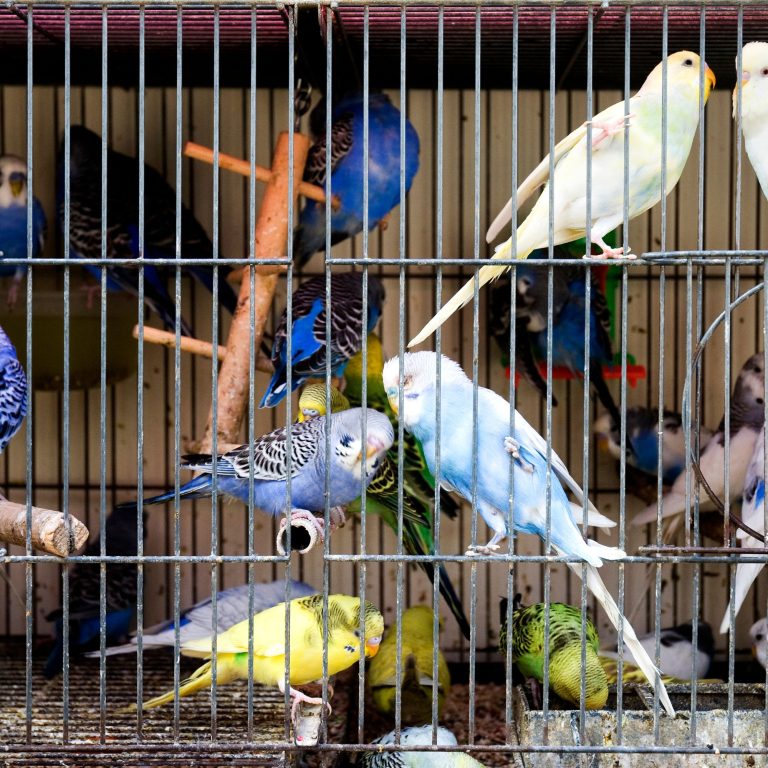Level Up Your Pet Parenting: The Power of Pet Health Monitoring
The Importance of Pet Health Monitoring
When it comes to the well-being of your furry friend, monitoring your pet’s health is not just important, it’s essential. Regular monitoring allows you to stay proactive and catch any potential health issues early on, ensuring that your pet receives the care they need. By actively tracking your pet’s health, you can enhance their quality of life and provide them with the best care possible.
Why Monitoring Your Pet’s Health is Essential
Monitoring your pet’s health is crucial for several reasons. Firstly, it allows you to detect any early signs of illness or discomfort that your pet may be experiencing. Pets are often masters at hiding their pain, and by the time symptoms become obvious, the underlying issue may have progressed. Regular monitoring enables you to spot subtle changes in behavior, appetite, or physical condition, which can be vital in identifying potential health problems.
Secondly, monitoring your pet’s health helps to prevent and manage chronic conditions. Certain health conditions, such as diabetes or kidney disease, require ongoing monitoring and management. By keeping a close eye on your pet’s vital signs and overall well-being, you can work with your veterinarian to develop a proactive care plan that minimizes the impact of these conditions on your pet’s health.
Lastly, pet health monitoring enables you to make informed decisions about your pet’s care. Whether it’s choosing the right diet, adjusting exercise routines, or considering treatment options, having access to accurate health data empowers you to make decisions that are tailored to your pet’s specific needs.
The Benefits of Pet Health Monitoring
Regularly monitoring your pet’s health comes with a range of benefits. Firstly, it allows you to detect potential health issues early, increasing the chances of successful treatment and a positive outcome. Early intervention can significantly improve your pet’s prognosis and prevent the progression of diseases.
In addition, monitoring your pet’s health can help you track their overall well-being and lifestyle. By monitoring vital signs, activity levels, and behavior patterns, you can gain insights into your pet’s overall health and happiness. This information can guide you in making adjustments to their diet, exercise routine, and living environment to ensure that they are living their best life.
Moreover, pet health monitoring provides peace of mind for busy professionals or pet owners with demanding schedules. With advancements in technology, there are now various smart solutions available, such as wearable devices, smart feeding solutions, and activity trackers, that allow you to remotely monitor your pet’s health and receive real-time updates. These innovative tools provide reassurance that your pet is safe and well, even when you’re not physically present.
By embracing pet health monitoring, you can take your pet parenting to the next level. Being proactive, informed, and attentive to your pet’s health needs not only ensures their well-being but also strengthens the bond between you and your furry companion. So, start monitoring your pet’s health today and give them the care they deserve.
For more information on smart feeding solutions that can aid in pet health monitoring, check out our articles on automatic cat feeders, smart pet feeders, and wifi pet feeders.
Smart Solutions for Pet Health Monitoring
When it comes to monitoring your pet’s health, technology has made great strides in providing smart solutions that can help you stay connected and ensure the well-being of your furry friend. Let’s explore some of the innovative options available for pet health monitoring.
Wearable Devices for Pets
Wearable devices for pets have gained popularity in recent years. These devices, such as smart collars or tags, can track various aspects of your pet’s health. They often include features like GPS tracking, activity monitoring, and even temperature sensing.
By using a smart collar or tag equipped with GPS, you can easily locate your pet if they wander off or get lost. Additionally, activity monitoring features allow you to track your pet’s daily exercise levels, ensuring they get the right amount of physical activity for their well-being. Some smart collars even monitor your pet’s sleep patterns, providing insights into their sleep quality.
Smart Feeding Solutions
Maintaining a healthy diet is crucial for your pet’s overall well-being. Smart feeding solutions, such as automatic pet feeders or smart pet feeders, can greatly simplify the feeding process and ensure that your pet is receiving the right amount of food at the right time.
These devices allow you to set personalized feeding schedules, which can be especially beneficial if you have a busy lifestyle. Some smart feeders even come with portion control features, ensuring that your pet receives the appropriate amount of food based on their size and dietary needs. By automating the feeding process, you can provide consistent and timely meals for your pet, even when you’re not at home.
Monitoring Your Pet’s Activity Levels
Regular exercise is essential for your pet’s physical and mental well-being. To ensure they are getting enough activity, you can utilize activity trackers or smart collars that monitor your pet’s movements throughout the day.
These devices can provide valuable insights into your pet’s activity levels, including the number of steps taken, distance traveled, and calories burned. Monitoring your pet’s activity can help you identify any changes in their routine or detect any signs of decreased mobility or potential health issues. By staying informed about your pet’s activity levels, you can make adjustments to their exercise routine as needed.
By incorporating these smart solutions into your pet’s daily life, you can have peace of mind knowing that you’re actively participating in their health monitoring. Remember, these devices are tools that can assist you in providing the best care for your pet, but they should never replace regular veterinary check-ups. Consultation with veterinarians is still essential to ensure your pet’s health is properly assessed and any necessary treatments or interventions are provided. Let technology be your ally in enhancing your pet’s quality of life, making pet parenting a more exciting and connected experience.
Tracking Your Pet’s Vital Signs
Monitoring your pet’s vital signs is an integral part of pet health monitoring. By keeping track of their heart rate and pulse, temperature, and respiratory rate, you can gain valuable insights into your pet’s overall health and detect any potential issues early on.
Heart Rate and Pulse Monitoring
Monitoring your pet’s heart rate and pulse is crucial for assessing their cardiovascular health. A normal heart rate for dogs typically ranges from 60 to 140 beats per minute, while cats usually have a heart rate between 140 and 220 beats per minute.
To measure your pet’s heart rate, place your hand on their chest near the left elbow and count the number of beats you feel in 15 seconds. Multiply that number by four to calculate the beats per minute. Alternatively, you can use a heart rate monitor specifically designed for pets, which can provide accurate and real-time readings.
Regularly tracking your pet’s heart rate can help you identify any irregularities or abnormalities, such as an unusually fast or slow heartbeat, which may indicate underlying health concerns. If you notice any significant changes, it’s essential to consult with a veterinarian for further evaluation and guidance.
Temperature Monitoring
Monitoring your pet’s temperature is another vital aspect of their health. A normal body temperature for dogs typically ranges from 99.5 to 102.5 degrees Fahrenheit, while cats generally have a temperature between 100.5 and 102.5 degrees Fahrenheit.
To measure your pet’s temperature, you can use a digital thermometer specifically designed for pets. It’s important to follow the manufacturer’s instructions carefully for accurate readings. Gently insert the thermometer into your pet’s rectum and hold it in place for the recommended time.
Frequent monitoring of your pet’s temperature can help you detect signs of illness, such as fever or hypothermia. If you notice any significant deviations from the normal range, it’s advisable to consult with a veterinarian for further evaluation and guidance.
Respiratory Rate Monitoring
Monitoring your pet’s respiratory rate is essential for assessing their respiratory health. The normal respiratory rate for dogs typically ranges from 10 to 30 breaths per minute, while cats usually have a respiratory rate between 20 and 30 breaths per minute.
To measure your pet’s respiratory rate, observe their breathing for one minute. Count each individual breath as one inhalation and one exhalation. It’s important to ensure your pet is at rest and calm during the observation period to obtain accurate readings.
Regular monitoring of your pet’s respiratory rate can help you identify any irregularities or abnormalities, such as rapid or shallow breathing. If you notice any significant changes in their respiratory rate, it’s crucial to consult with a veterinarian for further evaluation and guidance.
By actively monitoring your pet’s vital signs, including heart rate and pulse, temperature, and respiratory rate, you can play a proactive role in their overall health and well-being. Remember, if you have any concerns or notice any significant deviations from the normal ranges, it’s always best to consult with a veterinarian for professional advice and guidance.
Understanding Your Pet’s Behavior
When it comes to monitoring your pet’s health, understanding their behavior is an essential aspect. By tracking and analyzing their behavior patterns, you can gain valuable insights into their well-being and overall happiness. Let’s explore the importance of behavior tracking and analysis and how it can help you identify changes in behavior patterns.
Behavior Tracking and Analysis
Behavior tracking involves closely observing your pet’s actions, reactions, and habits over time. This can be done through simple observation or by utilizing smart gadgets and applications designed for this purpose. By tracking their behavior, you can establish a baseline of what is normal for your pet and detect any deviations that may indicate an underlying health issue.
Modern smart feeding solutions often come equipped with features that allow you to monitor and track your pet’s behavior. For example, an automatic pet feeder may have a companion pet feeding app that provides insights into your pet’s eating habits, such as the amount of food consumed and feeding frequency. This data can help you identify any changes in appetite or eating patterns that may warrant further investigation.
Identifying Changes in Behavior Patterns
As a pet parent, you are familiar with your furry friend’s unique personality and behavior. By paying attention to their usual demeanor, you can quickly notice if something seems off. Changes in behavior patterns can serve as early indicators of potential health issues.
For instance, a typically active and playful pet suddenly becoming lethargic or withdrawn might indicate an underlying problem. Conversely, increased agitation, restlessness, or aggression could also signify an issue that requires attention. By being aware of these changes and tracking them over time, you can provide your pet with the necessary care and seek veterinary assistance when needed.
The ability to track behavior patterns is particularly beneficial for busy professionals who may not always be able to directly observe their pet’s actions. Remote monitoring through smart pet feeders or smart pet water dispensers equipped with cameras allows you to keep an eye on your pet’s behavior, even when you’re away from home. By accessing the live feed or recorded footage, you can ensure that your pet is behaving normally and address any concerns promptly.
Understanding your pet’s behavior is an integral part of pet health monitoring. By tracking and analyzing their behavior patterns, you can detect changes that might indicate underlying health issues and take appropriate action. Whether it’s through simple observation or utilizing smart gadgets, monitoring your pet’s behavior allows you to be proactive in ensuring their well-being and happiness.
Remote Monitoring and Notifications
In today’s fast-paced world, keeping an eye on your pet’s health even when you’re not at home is easier than ever. With remote monitoring and real-time notifications, you can stay connected to your pet’s well-being no matter where you are.
Real-Time Alerts and Notifications
With pet health monitoring devices and apps, you can receive real-time alerts and notifications about your pet’s health. These smart gadgets can track vital signs, activity levels, and other important data, and keep you informed instantly.
For example, if your pet’s heart rate or temperature goes above or below a certain threshold, you’ll receive an immediate alert on your smartphone. This allows you to take prompt action and seek veterinary care if necessary. By staying updated with your pet’s health status, you can address any issues early on and prevent potential complications.
Accessing Data from Anywhere
One of the key benefits of remote pet health monitoring is the ability to access your pet’s health data from anywhere. Whether you’re at work, traveling, or simply away from home, you can conveniently check in on your pet’s well-being using a companion app or a web-based dashboard.
Through the app, you can view your pet’s vital signs, activity levels, and other relevant information. This allows you to track any changes or patterns and make informed decisions about your pet’s health. Additionally, having access to historical data can be valuable during veterinary consultations, as it provides a comprehensive overview of your pet’s health over time.
By leveraging the power of remote monitoring and notifications, you can ensure that you’re always in the loop when it comes to your pet’s health. Whether it’s through a smart pet feeder, wearable health tracker, or a pet health monitoring app, these technologies enable you to proactively care for your beloved pet, even when you can’t be physically present.
Remember, while remote monitoring is a valuable tool, it’s important to consult with veterinarians for comprehensive assessments and professional advice. Together with remote monitoring, veterinary guidance can help you make the best decisions for your pet’s health and well-being.
Taking Action for Your Pet’s Health
When it comes to your pet’s health, proactive measures can make all the difference. By taking action and utilizing the information gathered through pet health monitoring, you can ensure that your furry friend receives the best possible care. Here are some important steps to consider:
Consultation with Veterinarians
Regular consultations with your veterinarian are essential for maintaining your pet’s health. Share the data and insights gathered from your pet health monitoring devices, such as wearable devices or smart feeding solutions, with your vet. This information can provide valuable insights into your pet’s overall well-being and help your vet make more informed decisions regarding your pet’s healthcare needs. Remember, your veterinarian is your partner in ensuring your pet’s health and happiness.
Making Informed Decisions
Having access to real-time data about your pet’s vital signs, behavior patterns, and activity levels empowers you to make informed decisions. By monitoring your pet’s health, you can detect any changes or abnormalities early on, allowing you to take appropriate action promptly. Analyze the data collected by your pet health monitoring devices and consult with your veterinarian to determine the best course of action for your pet’s well-being.
Improving Your Pet’s Quality of Life
One of the greatest benefits of pet health monitoring is the ability to improve your pet’s overall quality of life. By tracking and analyzing your pet’s health data, you can identify any potential health issues, optimize their nutrition and exercise routine, and provide them with the care they need. From adjusting their diet with the help of an automatic pet food dispenser to ensuring they stay hydrated with a smart pet water dispenser, these smart feeding solutions can significantly contribute to your pet’s well-being. Check out our article on smart feeding solutions for more information.
Remember, as a pet parent, you play a vital role in your pet’s health and happiness. By actively monitoring their health, consulting with your veterinarian, and making informed decisions, you can ensure that your beloved companion receives the care they deserve. Embrace the power of pet health monitoring and take the necessary steps to provide your furry friend with a happy and healthy life.







